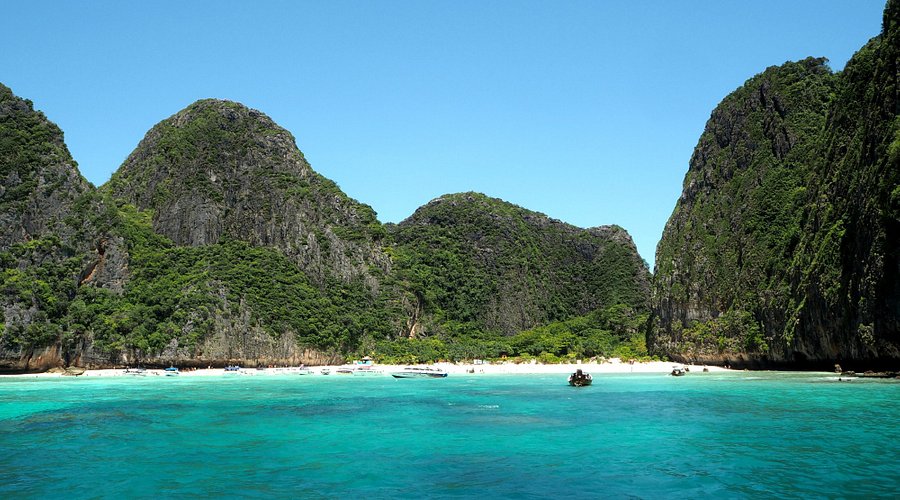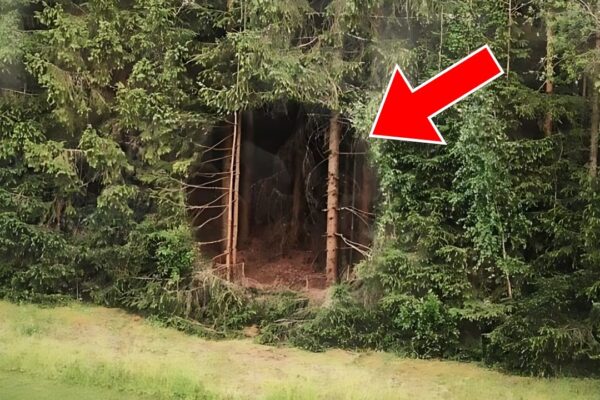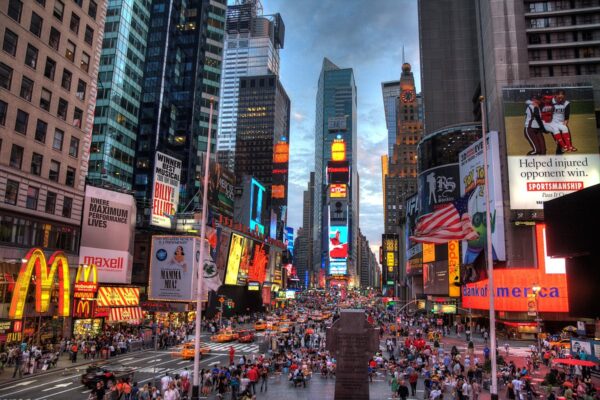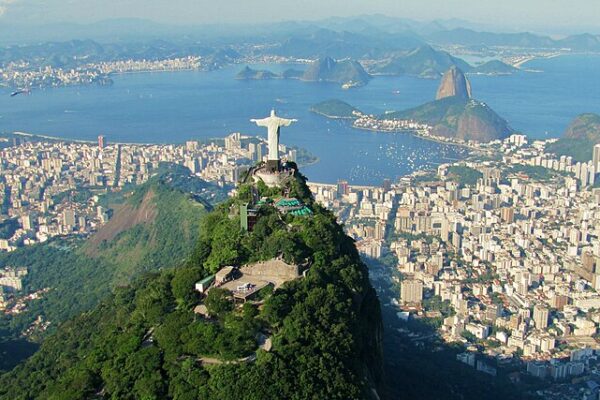Tourism brings economic benefits to countless destinations worldwide, but not all tourism is created equal. Some of the most popular tourist attractions have become environmental disasters due to overdevelopment, pollution, and unsustainable visitor numbers. These so-called “eco nightmares” highlight the darker side of travel, where the desire to see and experience natural wonders often leads to their destruction. Here are several famous tourist destinations that have suffered significant environmental harm — and continue to do so.
1. Maya Bay, Thailand
Maya Bay became world-famous after its appearance in the 2000 film The Beach, drawing hordes of tourists to its picturesque white sands and turquoise waters. Unfortunately, this influx of visitors overwhelmed the fragile ecosystem. Careless snorkelers trampled coral reefs, boats leaked fuel into the water, and piles of trash accumulated along the shore. By 2018, the Thai government was forced to close the beach to allow the ecosystem to recover — a cautionary tale about the cost of unchecked tourism.
2. Mount Everest, Nepal
Climbing the world’s tallest peak may be a life goal for many adventurers, but the environmental toll of Everest expeditions has reached alarming levels. Each year, climbers leave behind tons of trash, including discarded oxygen tanks, tents, food packaging, and even human waste. The sheer volume of climbers and poor waste management infrastructure at such high altitudes has turned parts of Everest into a literal garbage dump. Despite cleanup efforts, the damage continues.
3. The Great Barrier Reef, Australia
The Great Barrier Reef is one of the world’s most spectacular natural wonders, but its survival is seriously threatened. Mass tourism — combined with climate change, pollution, and coral bleaching — has incredibly stressed this delicate ecosystem. Boats dropping anchor directly onto coral, sunscreen pollution from swimmers, and reckless diving practices have all contributed to the reef’s decline. Without urgent action to curb unsustainable tourism practices, this underwater paradise could vanish within our lifetime.
4. Venice, Italy
Venice’s beauty and history attract millions of tourists yearly, but the city is sinking under the weight of over-tourism. Massive cruise ships discharge pollutants into its fragile lagoon, while hordes of day-trippers strain the city’s aging infrastructure. Pollution, rising sea levels, and erosion threaten Venice’s long-term survival. The environmental damage is so severe that UNESCO has warned the city could lose its World Heritage status if action isn’t taken.
5. Machu Picchu, Peru
Perched high in the Andes, Machu Picchu is a bucket-list destination for history and nature lovers alike. However, this ancient wonder faces serious environmental risks due to soaring visitor numbers. The foot traffic has eroded pathways, while waste generated by tourists has overwhelmed local disposal systems. Helicopter flights to nearby areas also disrupt wildlife and fragile ecosystems. Despite visitor caps and new regulations, the strain on Machu Picchu continues to grow.
Final Thoughts
When poorly managed, tourism can become a destructive force, leaving a trail of ecological damage in its wake. As travelers, it’s crucial to be mindful of our visits’ impact on the environment. Choosing eco-friendly tour operators, respecting local guidelines, avoiding over-touristed sites, and supporting sustainable initiatives can help reduce our footprint. After all, the goal of travel should be to experience and protect the world’s beauty — not to destroy it.






